Minimal surfaces in the three-dimensional sphere
The three-sphere 𝕊3 is the three-dimensional boundary of a four-dimensional unit ball, much like the familiar two-sphere 𝕊2 is the boundary of a three-dimensional unit ball. It is a classical setting for the study of minimal surfaces. In contrast to Euclidean space ℝ3, where minimal surfaces are either noncompact or with boundary, the three-sphere 𝕊3 contains a rich variety of closed minimal surfaces.
Visualizing any surface in 𝕊3 is challenging because 𝕊3 is a three-dimensional manifold embedded in four-dimensional space. Since ancient times, stereographic projection is a standard method for displaying spherical geometry in our Euclidean world. This mapping necessarily distorts distances and areas (just like any flat map of the Earth), but it preserves all angles. In particular, circles in the sphere are mapped to perfect circles or straight lines in Euclidean space. The figures displayed here are the images of minimal surfaces in 𝕊3 after stereographic projection to ℝ3. Regions of the surface that were near the pole of projection appear much larger than they really are, but in essence, we see a conformally faithful “shadow” of an object from 𝕊3.
References
- H. B. Lawson, Jr., Complete minimal surfaces in S3. Ann. of Math. (2) 92 (1970).
- M. B. Schulz and D. Wiygul, A new family of minimal surfaces of even genus in the three-dimensional sphere. Preprint (arXiv:2507.22531).
- H. Karcher, U. Pinkall, and I. Sterling, New minimal surfaces in S3. J. Differential Geom. 28 (1988).
The Lawson surfaces
The simplest minimal surfaces in 𝕊3 are the totally geodesic equatorial sphere and the flat Clifford torus. Beyond these, Lawson [1] constructed minimal surfaces ξm,k of genus m·k for any positive integers m,k. The surfaces ξm,k and ξk,m are congruent in 𝕊3. When k is large, ξm,k can be interpreted as a desingularisation of m+1 great spheres intersecting along a common equator at equal angles. In this sense, the Lawson surfaces are spherical analogues of the (later constructed) Karcher–Scherk towers in ℝ3 which desingularise m+1 planes intersecting along a common line.
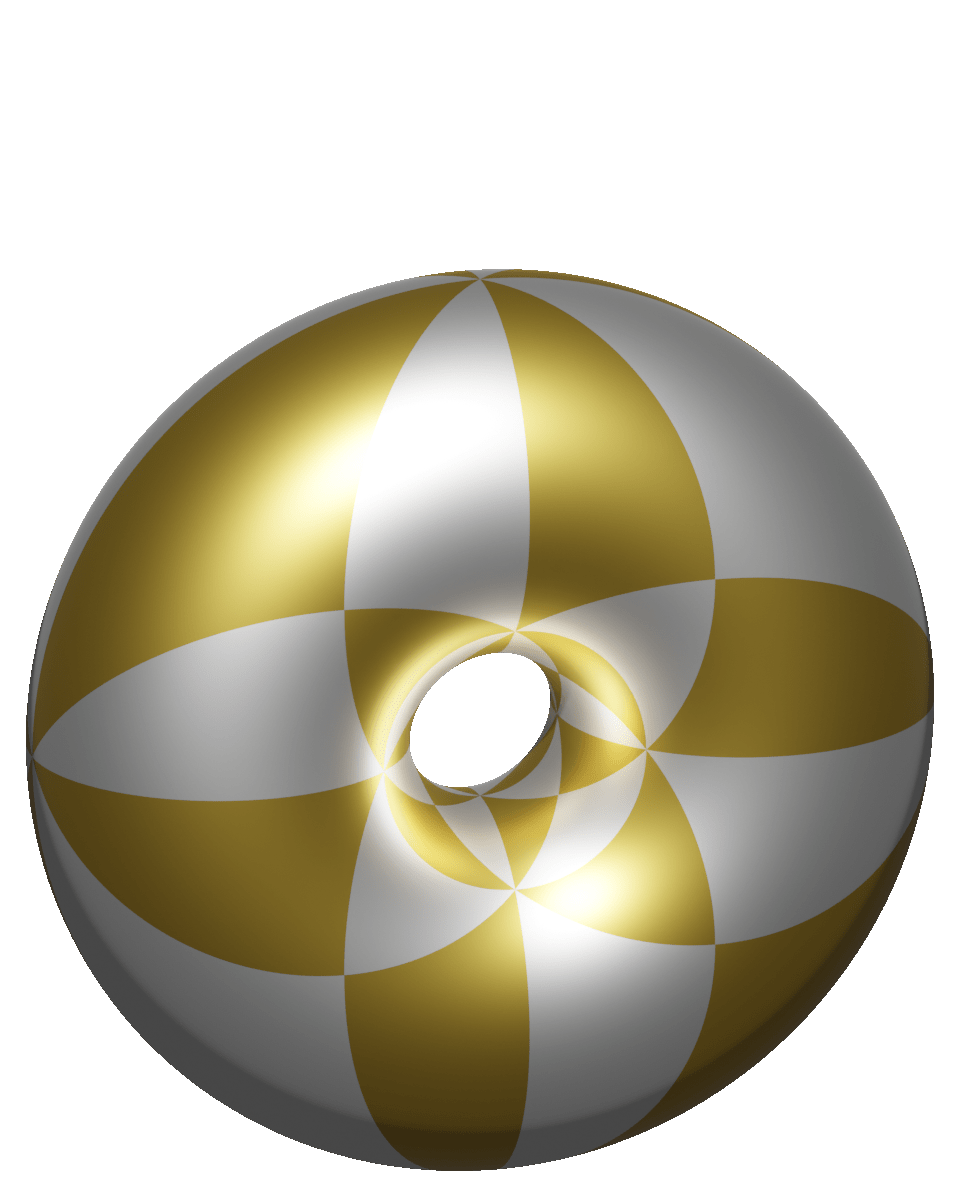
genus 1
area = 2π2
area ≈ 6.973 π
symmetry order 48
area ≈ 7.263 π
symmetry order 64
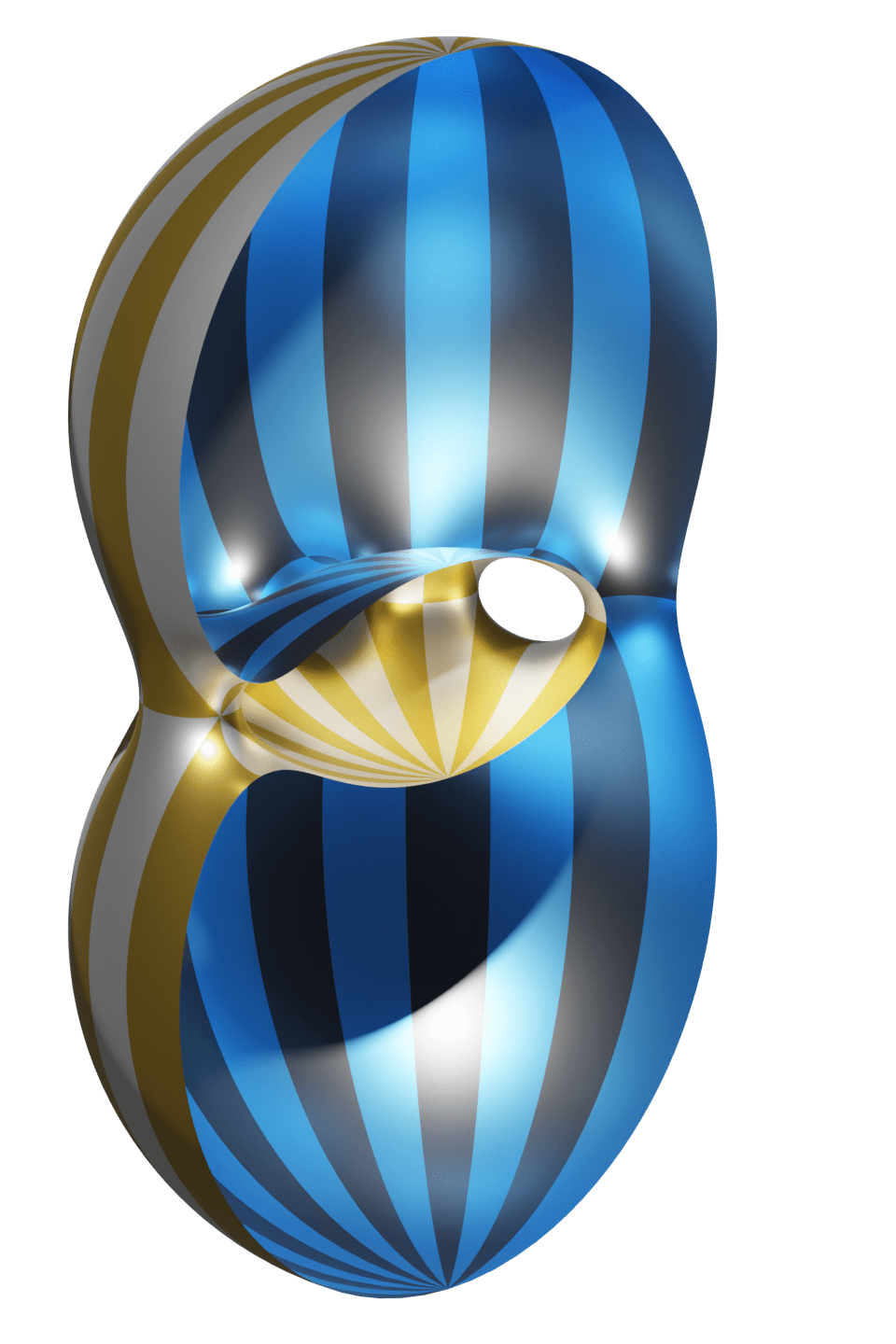
area ≈ 7.595 π
symmetry order 112
area ≈ 8.578 π
symmetry order 144
area ≈ 9.453 π
symmetry order 96
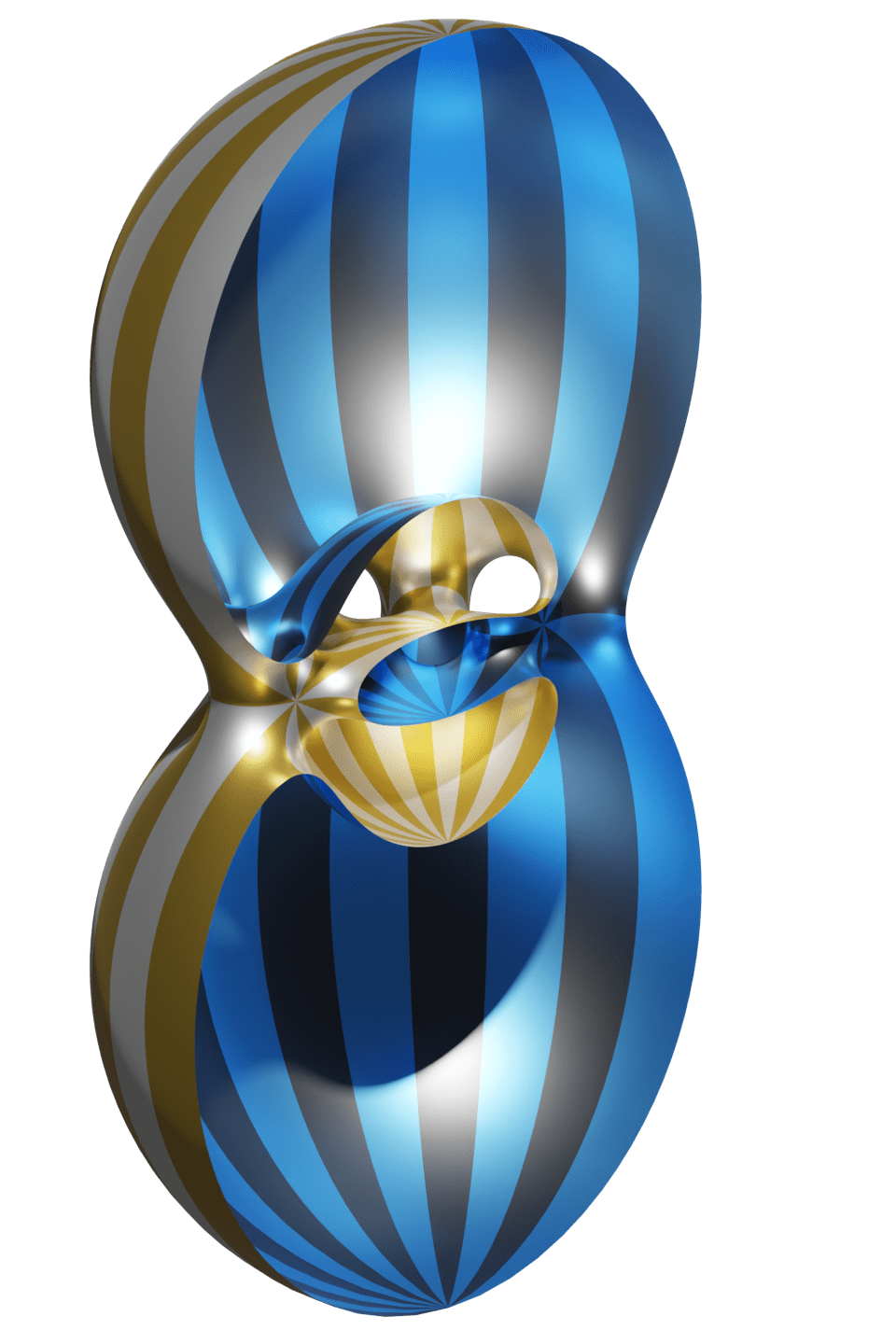
area ≈ 10.570 π
symmetry order 168
area ≈ 10.890 π
symmetry order 256
area ≈ 11.850 π
symmetry order 160
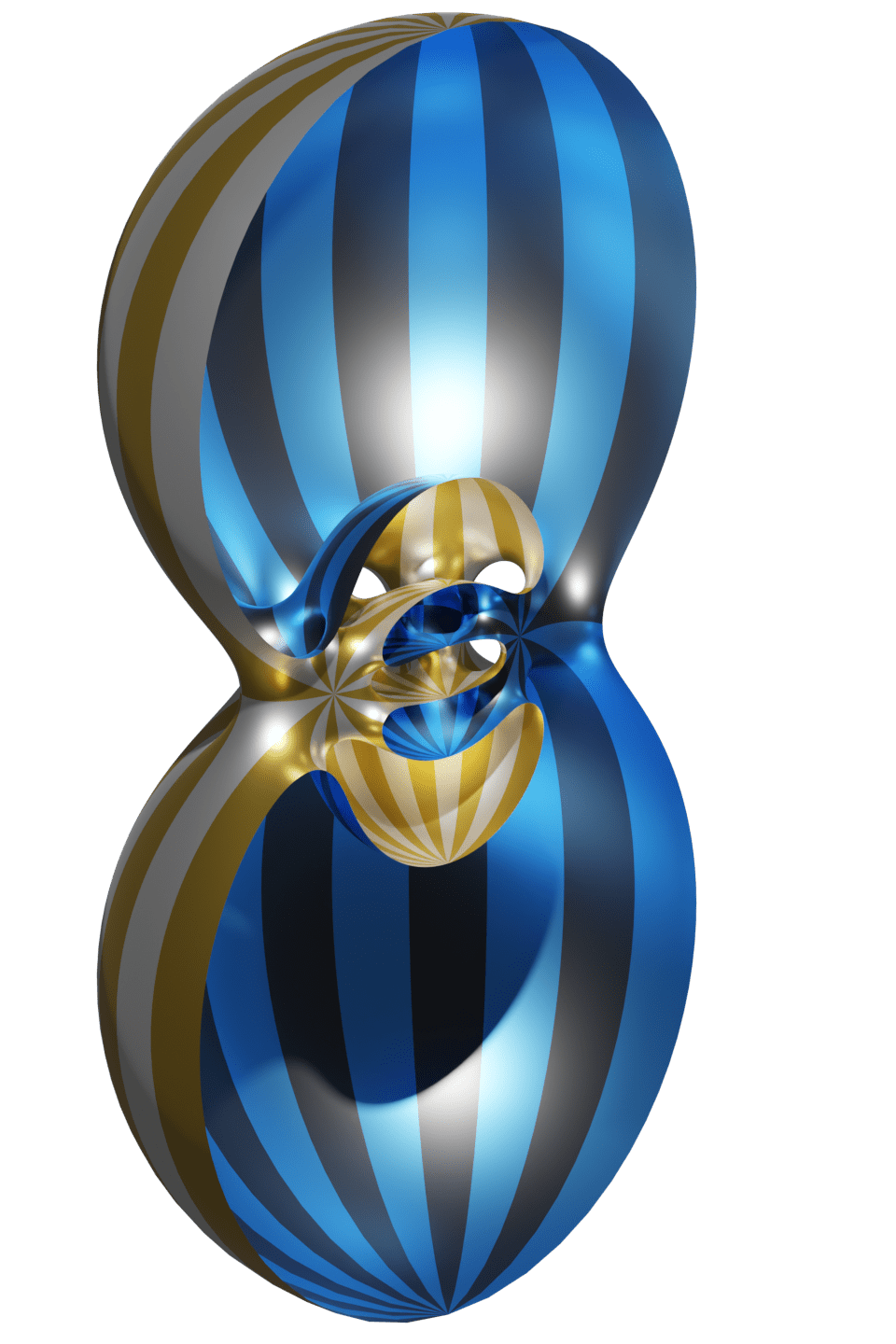
area ≈ 13.006 π
symmetry order 224
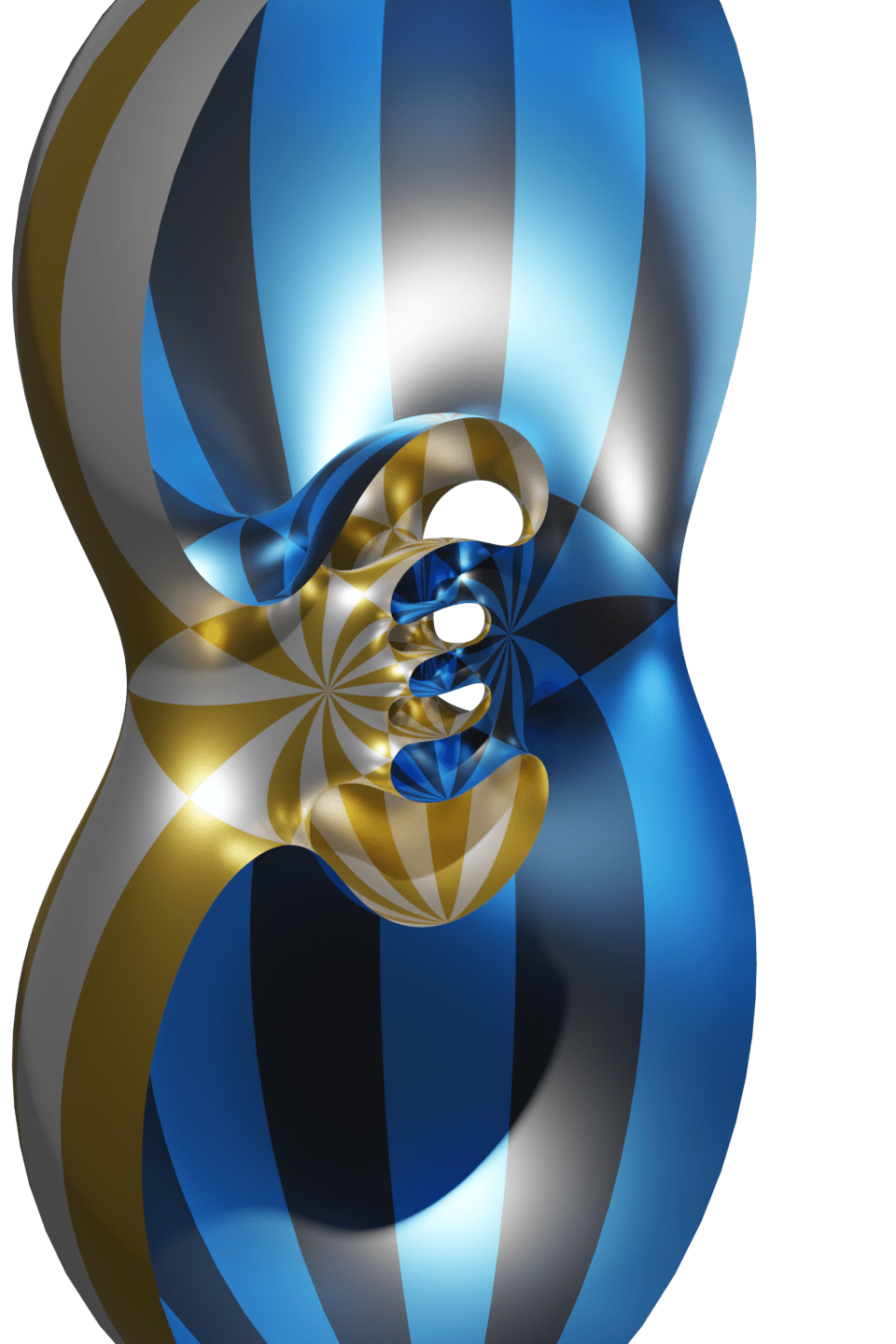
area ≈ 13.212 π
symmetry order 400
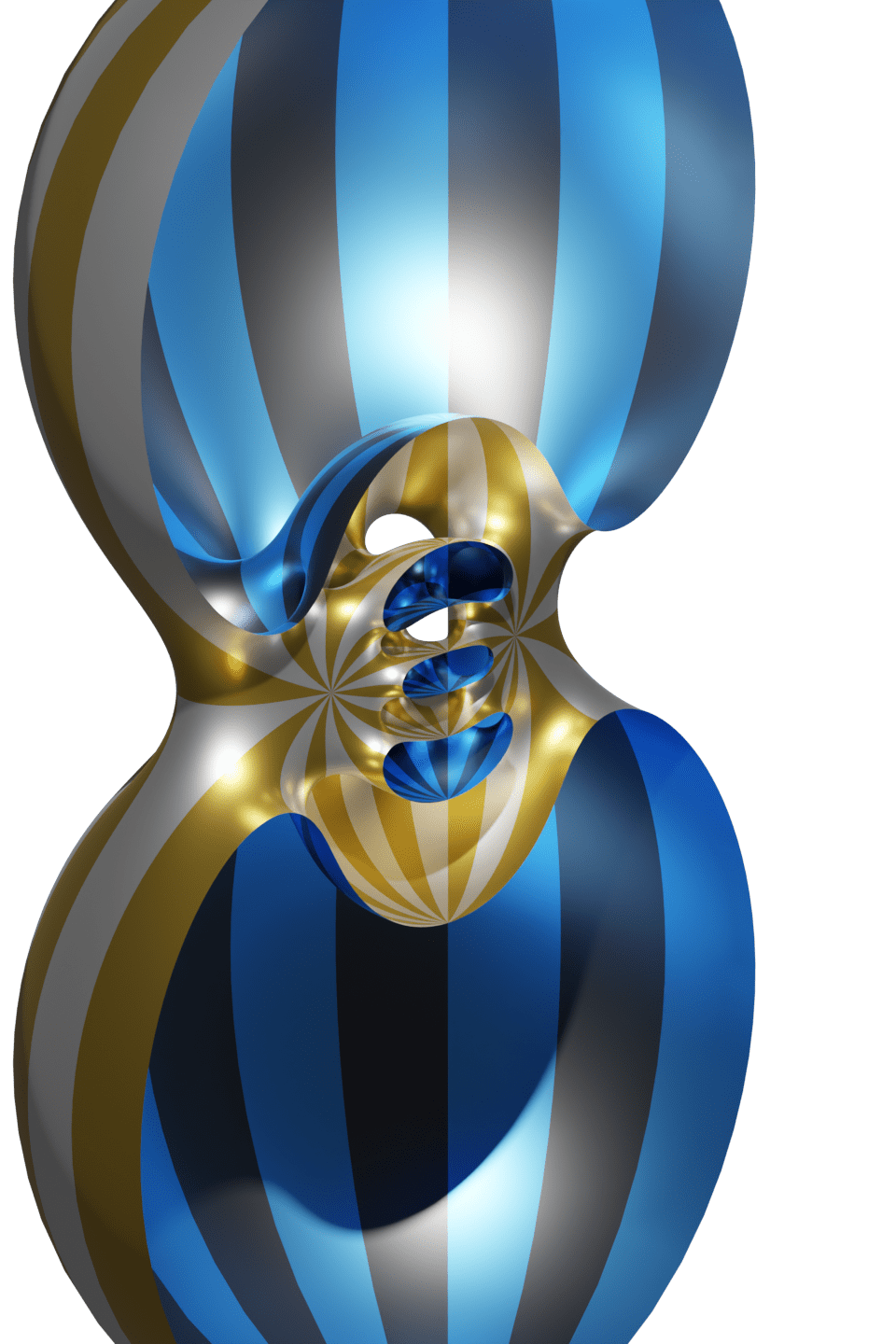
area ≈ 14.219 π
symmetry order 240
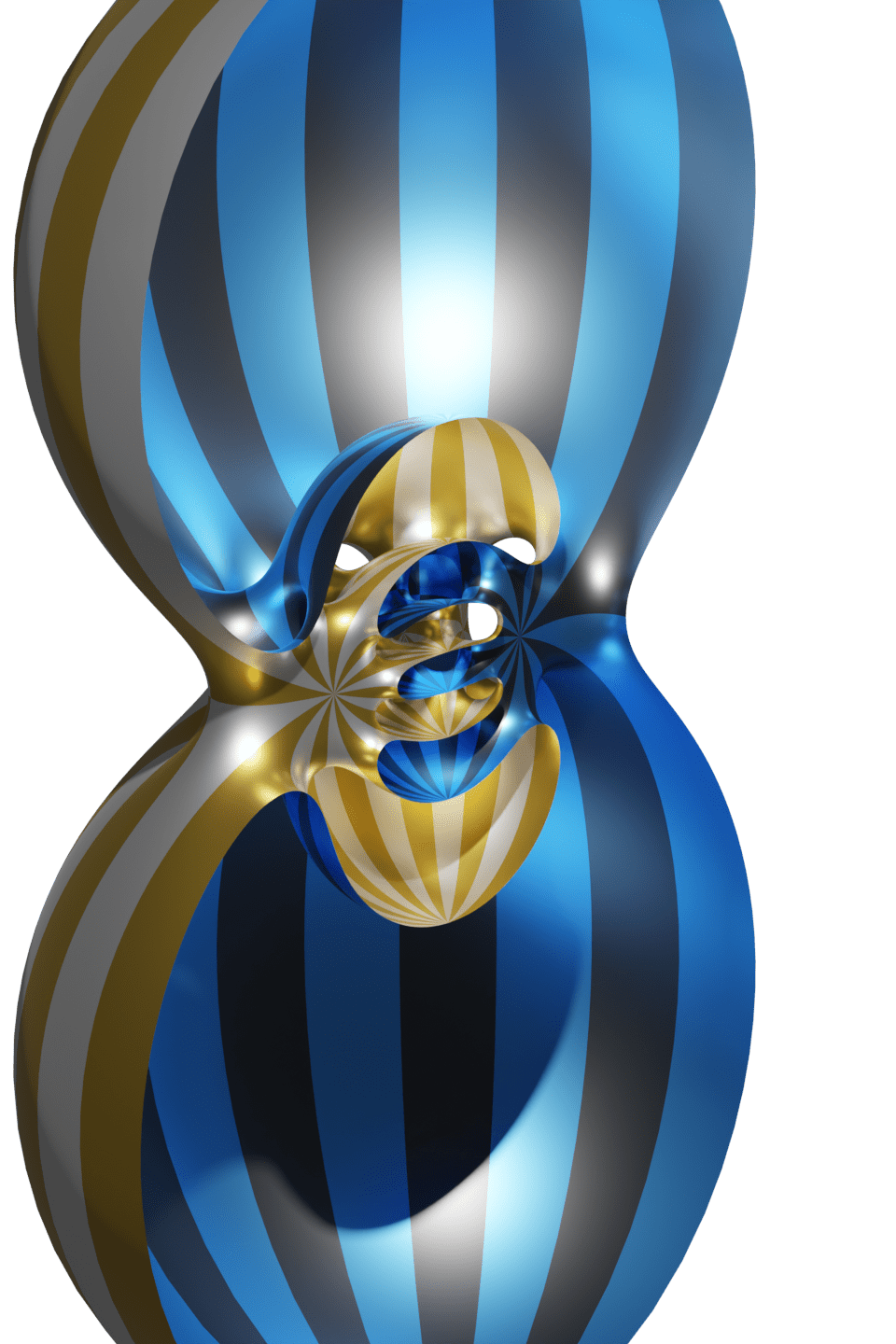
area ≈ 14.981 π
symmetry order 280
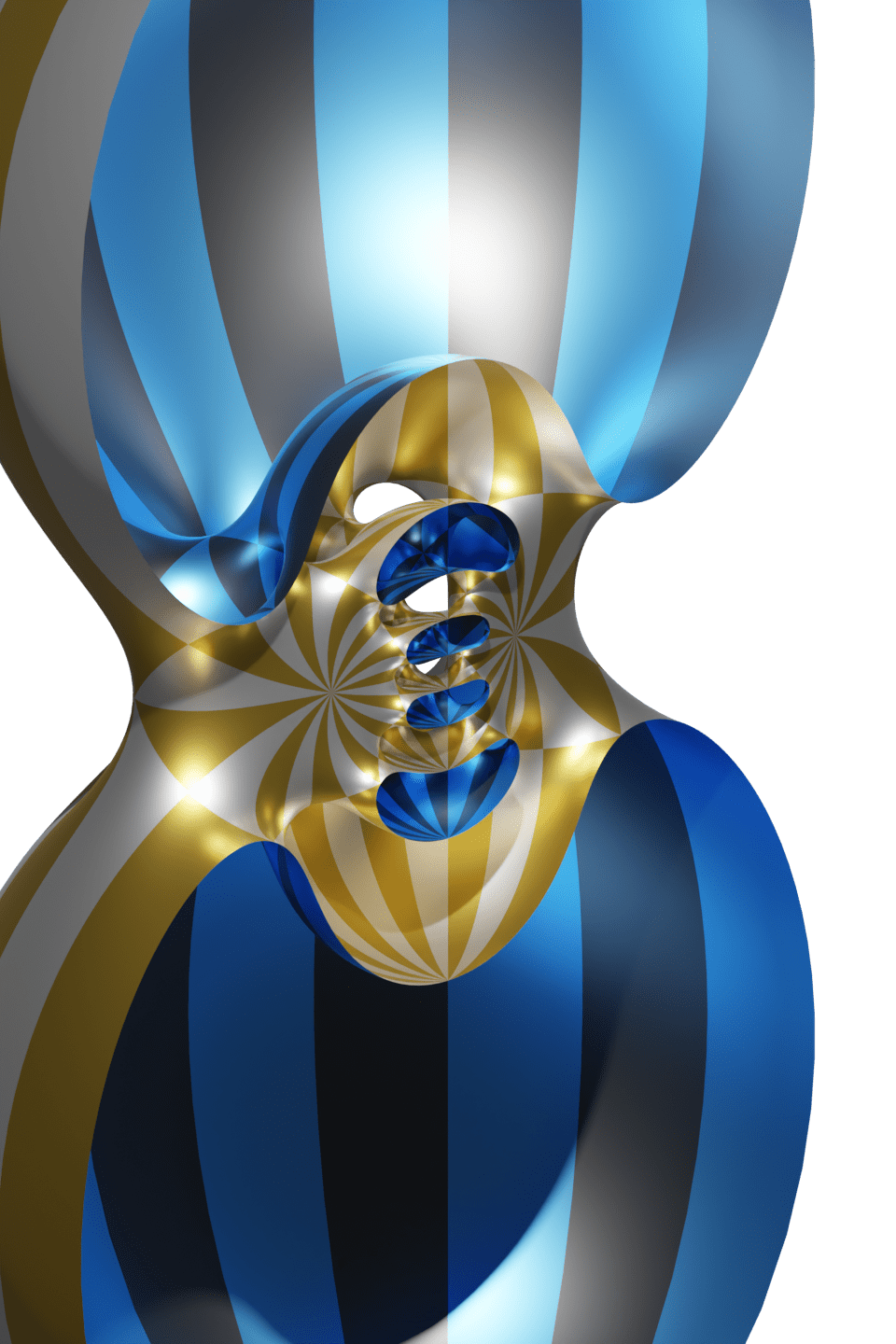
area ≈ 15.540 π
symmetry order 576
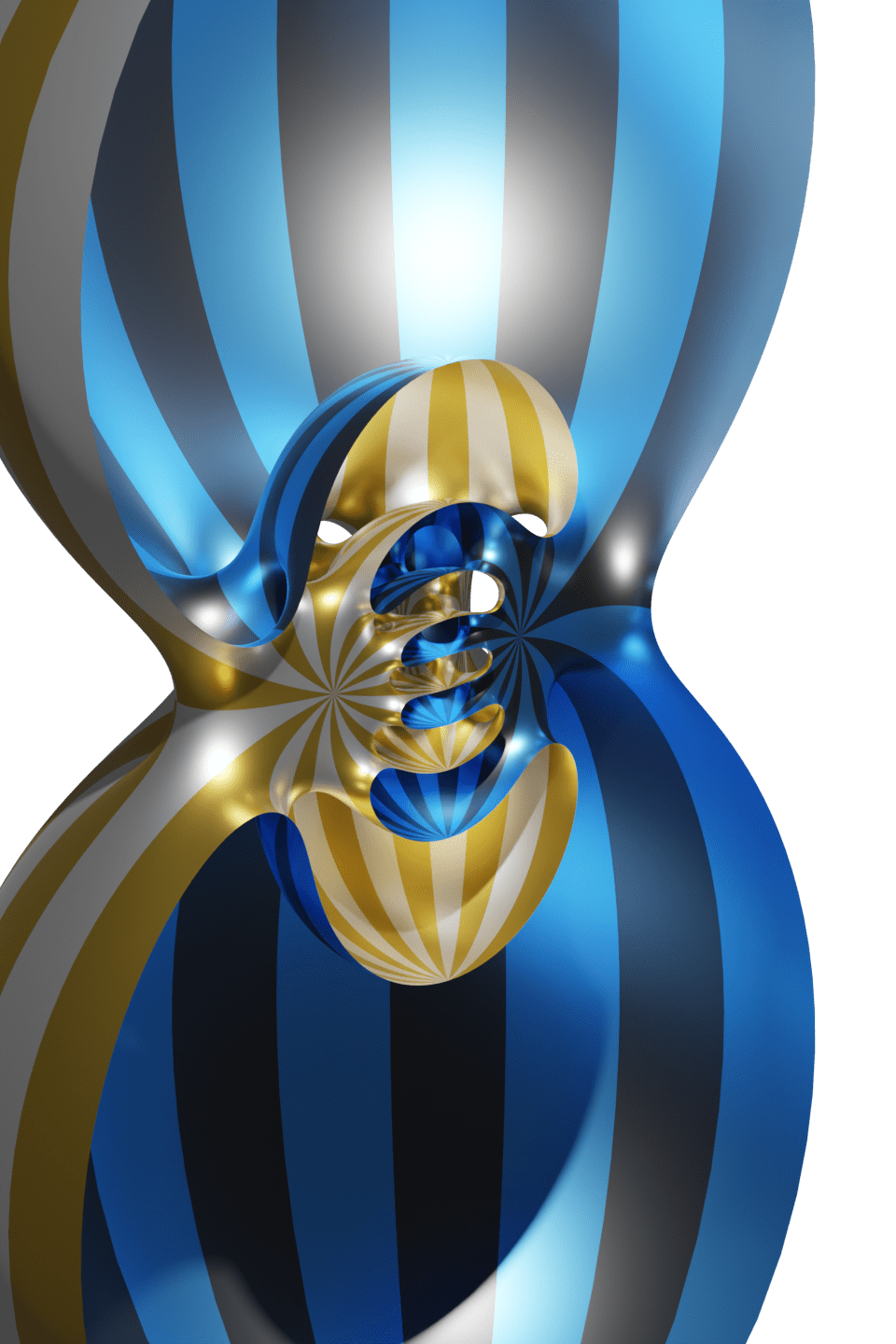
area ≈ 16.577 π
symmetry order 336
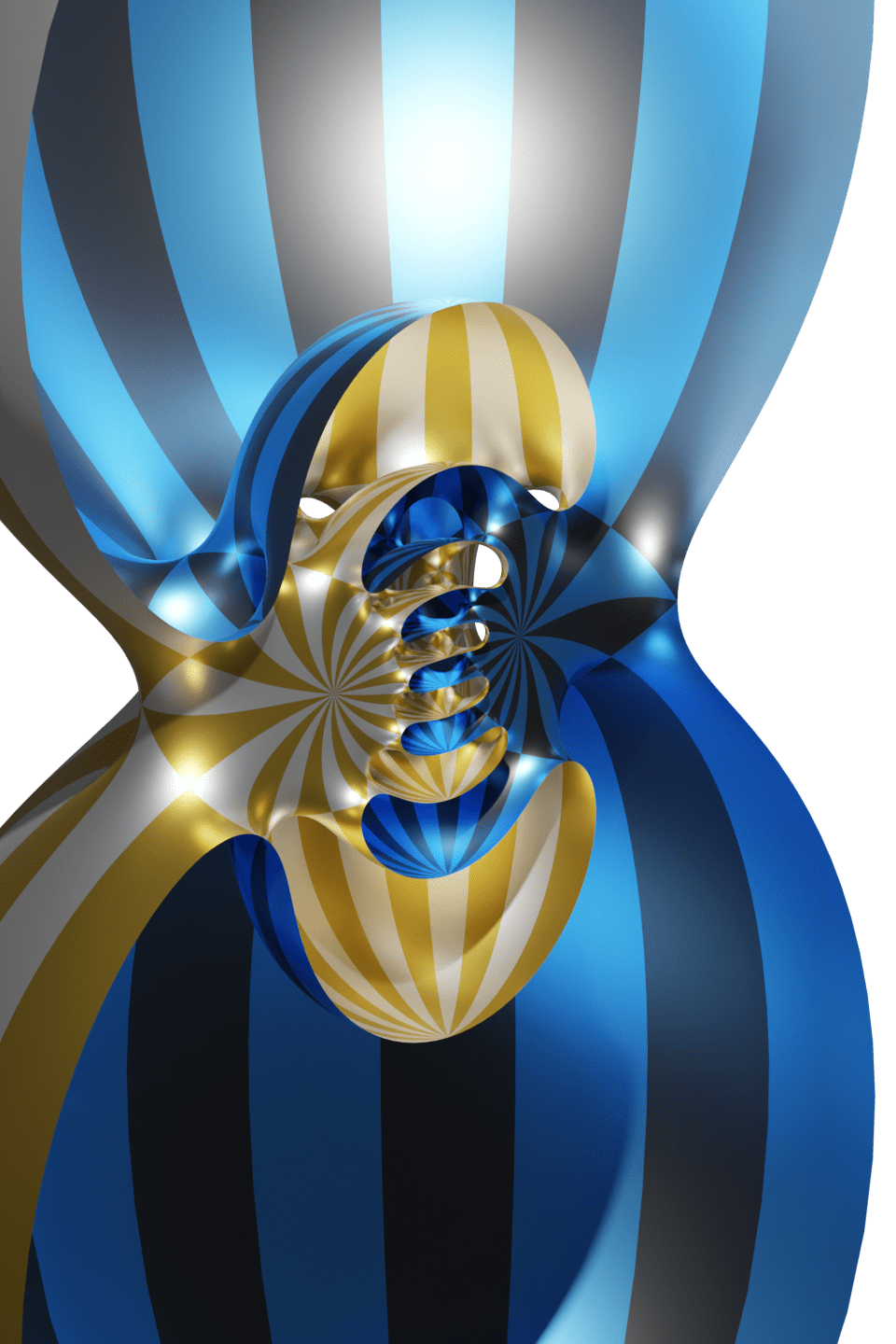
area ≈ 17.871 π
symmetry order 784
New minimal surfaces of even genus in the 3-sphere
The following minimal surfaces in 𝕊3 have been discovered recently in [2] as spherical analogues of the celebrated Costa–Hoffman–Meeks surfaces in ℝ3 (in the same sense as the Lawson surfaces are spherical analogues of the Karcher–Scherk towers). In this analogy, the equatorial sphere plays the role of the plane and the Clifford torus plays the role of the complete catenoid. The surface of genus 4 in this family is conjectured to be congruent with the Lawson surface ξ2,2, while the remaining surfaces are geometrically distinct from any other known example.
symmetry order 144
symmetry order 32
symmetry order 40
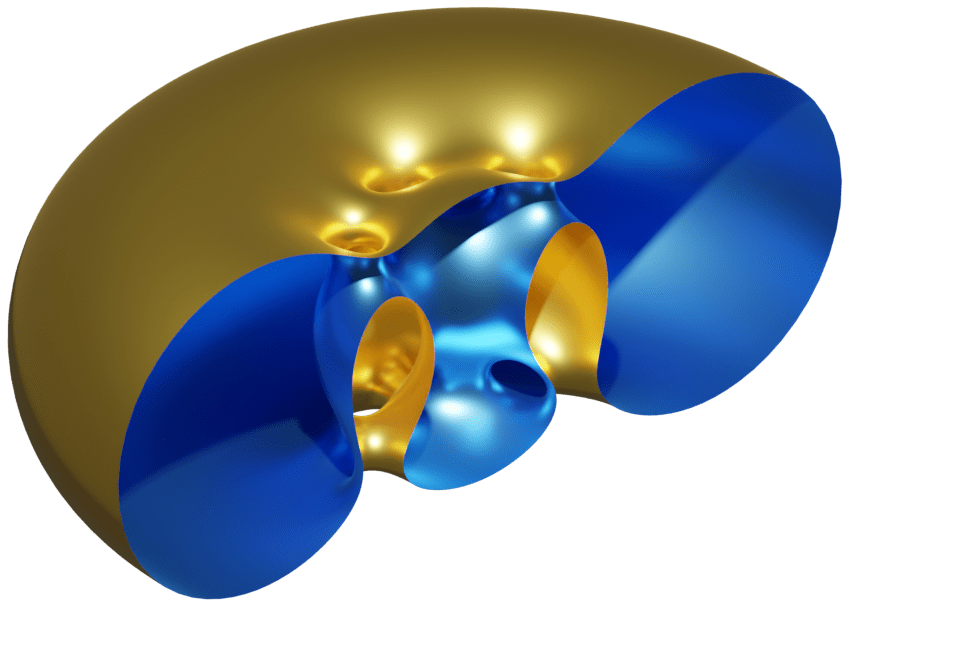
symmetry order 48
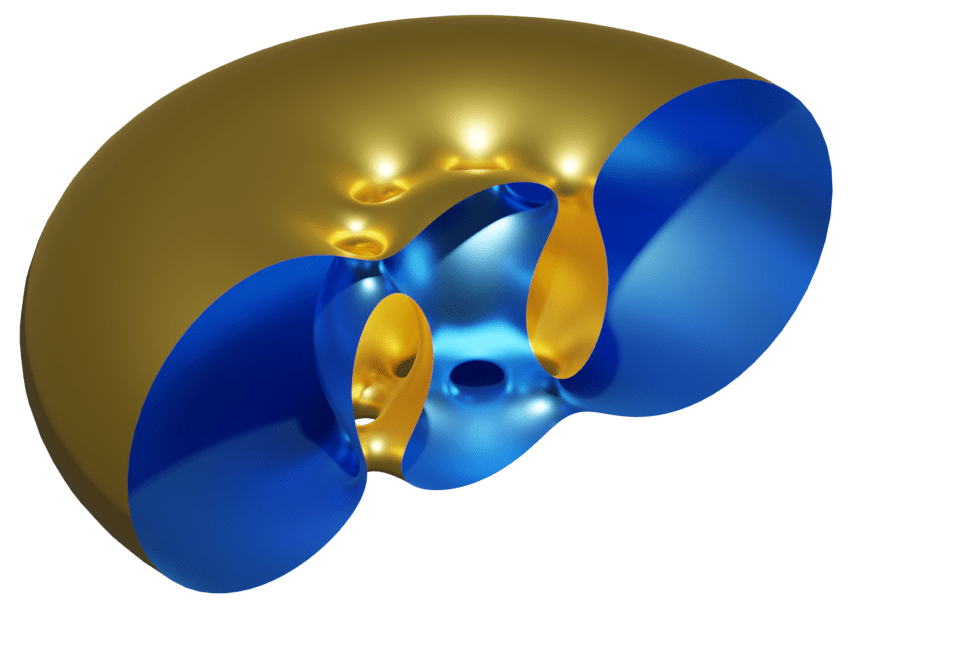
symmetry order 56
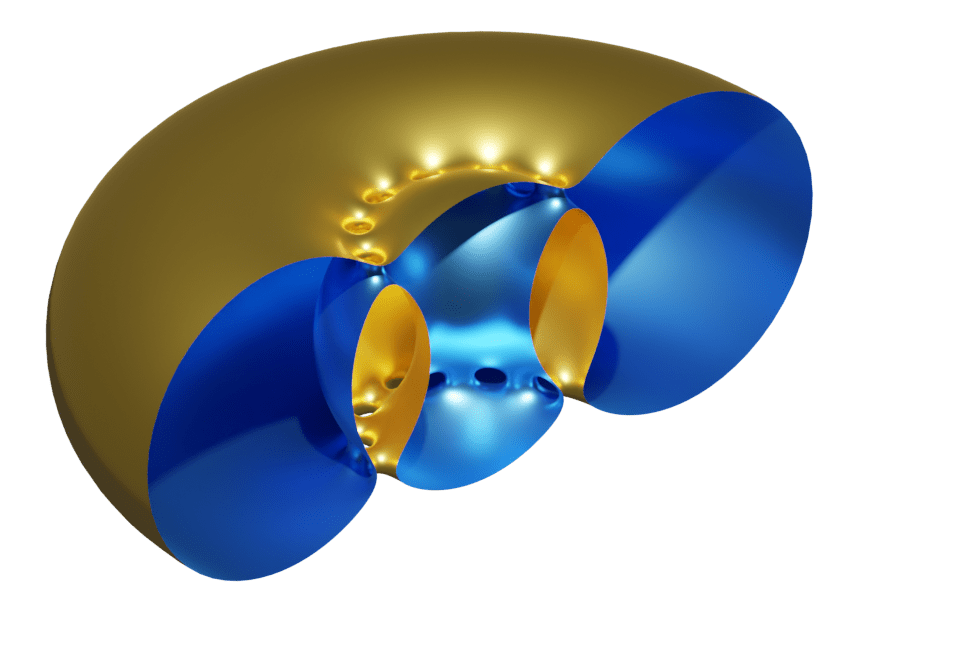
symmetry order 96
The Karcher–Pinkall–Sterling surfaces
symmetry order 240
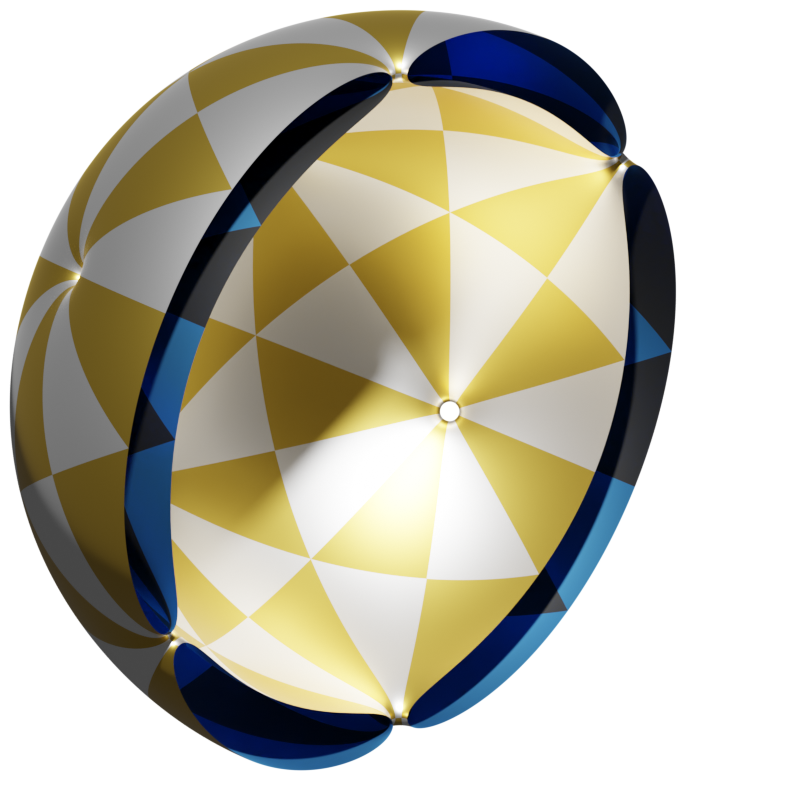
symmetry order 2304

symmetry order 14400





